Annals of Emergency Medicine
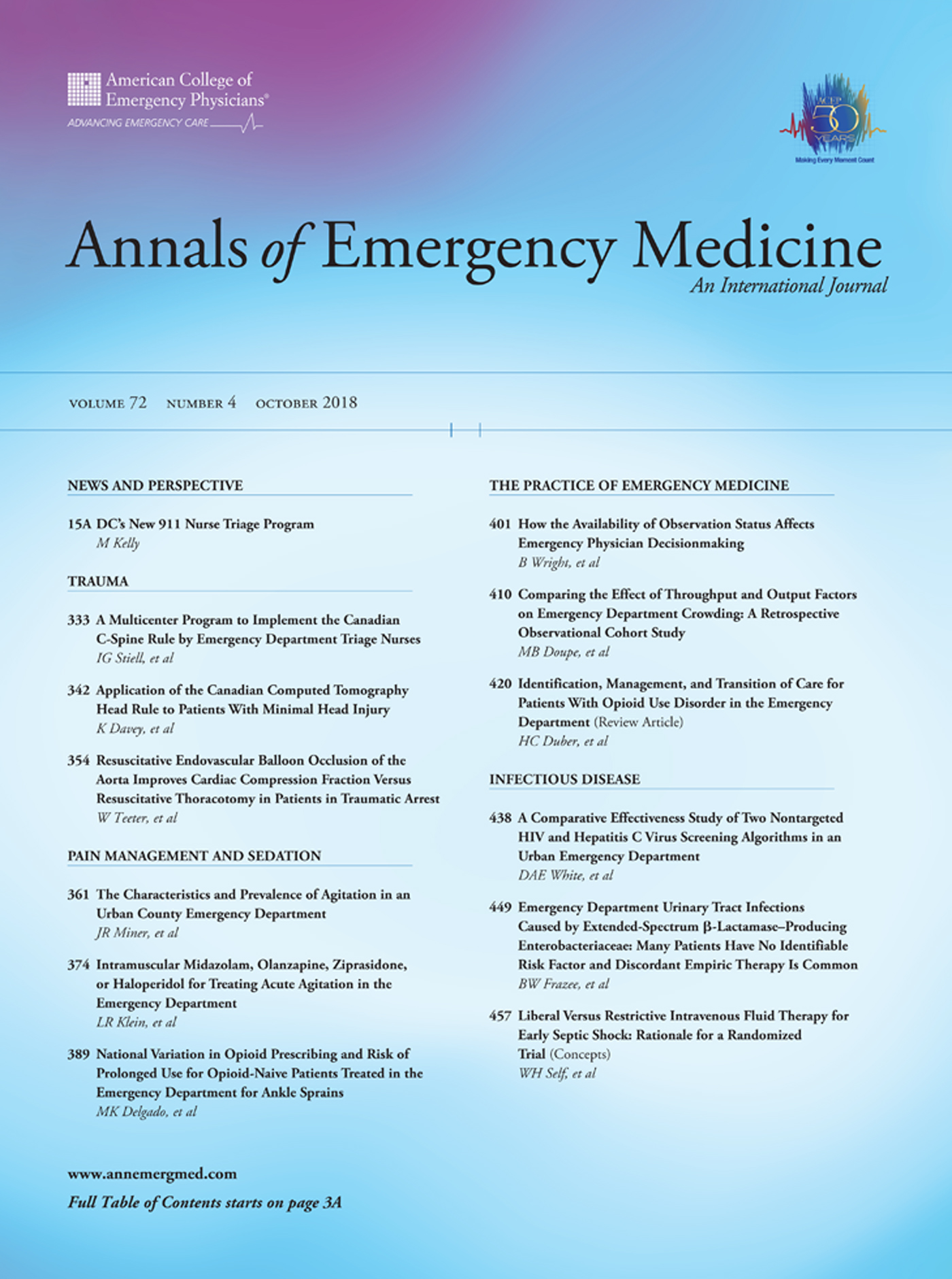
Official journal of the American College of Emergency Physicians
(The print version of this article has been scheduled for November 2019)
State of the Journal: Women First Authors, Peer Reviewers, and Editorial Board Members at Annals of Emergency Medicine
Amy H. Kaji, William J. Meurer, Tracy Napper, Lise E. Nigrovic, William R. Mower, David L. Schriger, Richelle J. Cooper for the Annals of Emergency Medicine Diversity Task Force
https://doi.org/10.1016/j.annemergmed.2019.05.011
Introduction: Despite the increasing numbers of women working in medicine, the proportion of those promoted to the highest academic leadership positions remains low.1 Emergency medicine is no exception, despite evidence that women in academic emergency medicine are more likely to be fellowship trained than their male academic emergency medicine colleagues.2, 3 In addition to there being a systemic gap in research funding for women, they are less likely to publish in peer-reviewed journals.4, 5, 6, 7, 8, 9, 10 Female first authorship in most high-impact general medical journals (Annals of Internal Medicine, Archives of Internal Medicine, BMJ, Journal of the American Medical Association, and The Lancet) has increased from 27% in 1994 to 37% in 2014, but it has plateaued and declined in other journals, such as the New England Journal of Medicine.11 In the emergency medicine literature, a 2007 report found that only 18% of first and 17% of last authors were women.12 More recent reports indicate 26% of first authors in emergency medicine publications were women.13
Journal editorial board membership is an important component of academic leadership and is a mark of professional achievement. A 2011 review of 60 journals demonstrated that 16% of editors in chief (10 of 63) were women, and less than one fifth (18%; 719/4,112) of all editorial board members were women.14 Female representation on editorial boards of medical journals does not mirror the gender composition in the corresponding specialties.15 The reasons for this gender disparity are likely multifaceted. Both implicit and explicit biases, as well as lack of mentorship and female role models, likely contribute. In their 2007 report Beyond Bias and Barriers: Fulfilling the Potential of Women in Academic Science and Engineering, the National Academy of Sciences called for a “reasonable representation of women on editorial boards.”16
We report on the state of Annals of Emergency Medicine with respect to the gender distribution among the editorial board and peer reviewer pool, and first authors who are women, overall and by article type. We examined editorial board gender composition as a measure of current gender diversity, and the reviewer pool as a measure of potential future gender diversity, because future editorial board members are commonly selected from the reviewers. Last, we examined the gender of first authors of invited articles in contrast to the gender of first authors of unsolicited articles to determine whether there is bias in the commissioning process.
African journal of emergency medicine
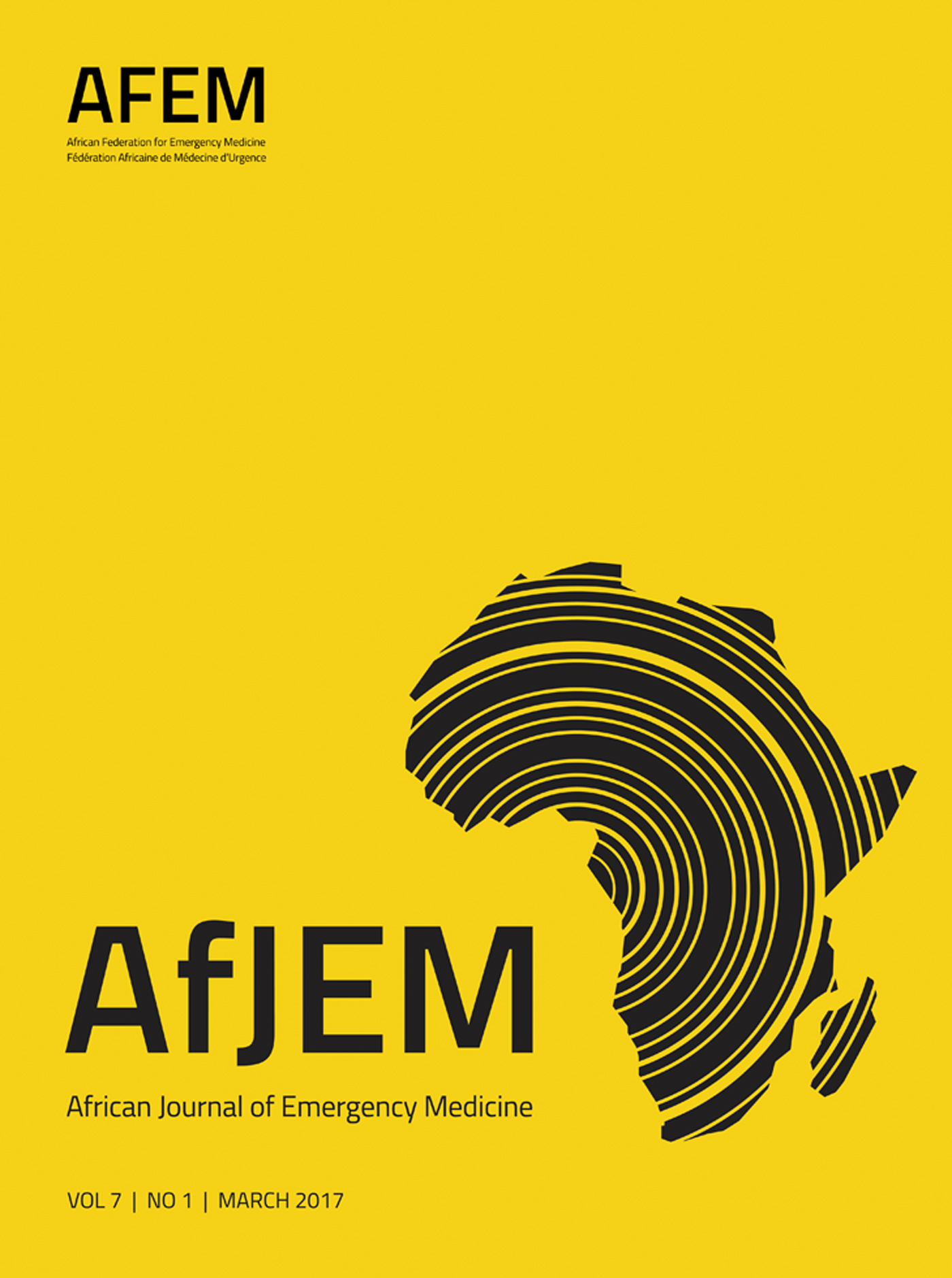
The official journal of the African Federation for Emergency Medicine, the Emergency Medicine Association of Tanzania, the Emergency Medicine Society of South Africa, the Egyptian Society of Emergency Medicine, the Libyan Emergency Medicine Association, the Ethiopian Society of Emergency Medicine Professionals, the Sudanese Emergency Medicine Society, the Society of Emergency Medicine Practitioners of Nigeria and the Rwanda Emergency Care Association
Triage live lecture versus triage video podcast in pre-hospital students’ education
Aghababaeiana H, Araghi Ahvazi L, Moosavi A, Ahmadi Mazhin S, Tahery N, Nouri M, Kiarsi M, Kalani L Afr J Emerg Med 2019;9(2):81–6
https://doi.org/10.1016/j.afjem.2019.01.006
Introduction: Triage is the process of determining the priority of patients’ treatments based on the severity of their conditions. The aim of the present study was to survey the effect of triage video podcasting on the knowledge and performance of pre-hospital students.
Methods: Sixty pre-hospital students were randomly divided into two groups of a 30-subject control group and a 30-subject intervention group. A pre-test was administered among all students. Afterwards, for the first group, triage education was offered through lectures using PowerPoint, while for the second group, audio and video podcasts tailored for this training program were employed. Right after the training as well as one month later, post-tests were run for both groups, and the results were analysed using an independent t-test and covariance.
Results: No significant difference was observed between the effects of both types of education on knowledge and performance, either immediately, or one month after training.
Discussion: We suggest that video podcasts are ready to replace traditional teaching methods in triage.
Reproduced with permission
Emergency Medicine Journal
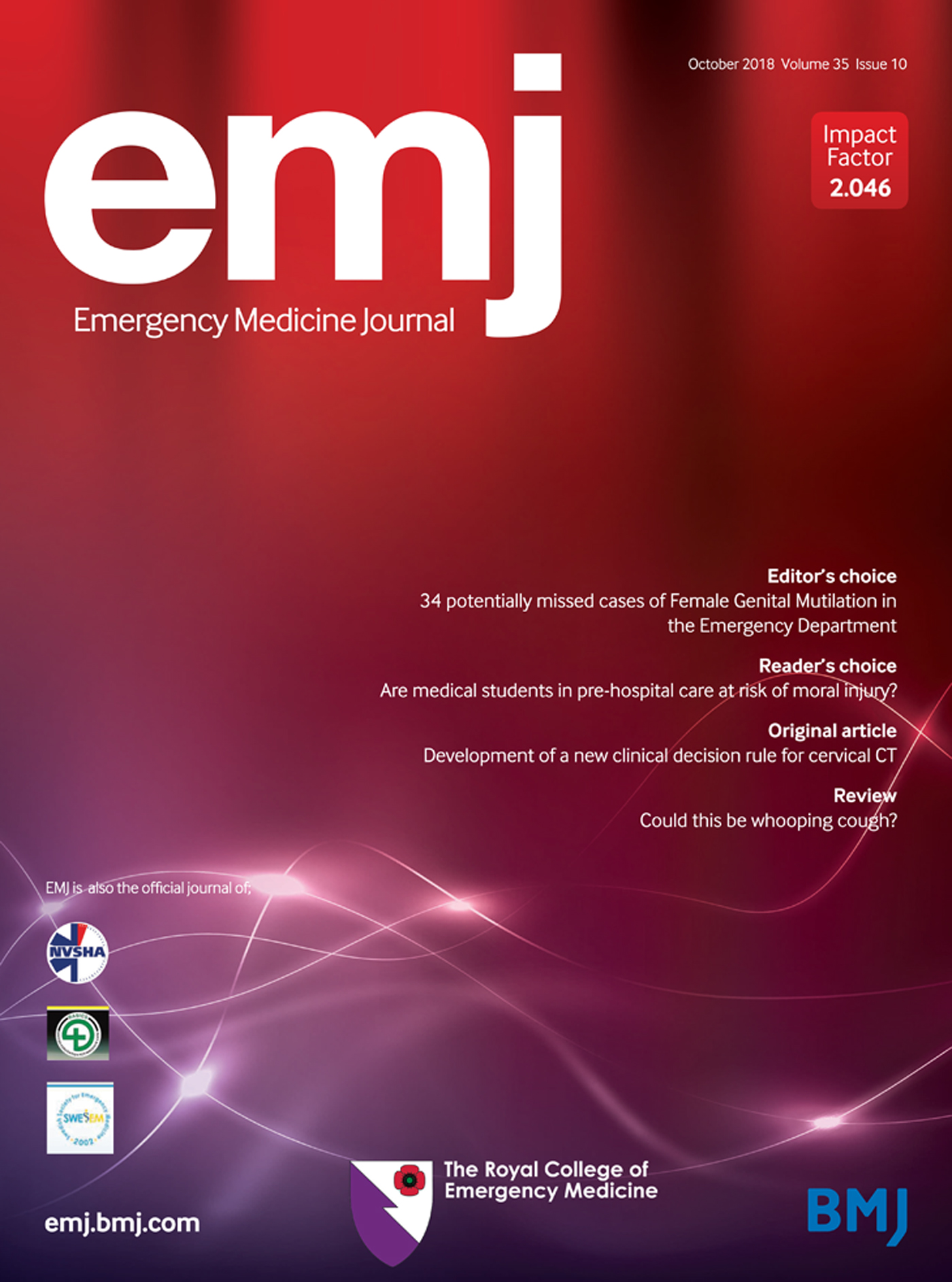
Official Journal of the Royal College of Emergency Medicine
Triaging the triage: reducing waiting time to triage in the emergency department at a tertiary care hospital in New Delhi, India
Akshay Kumar, Dheeneshbabu Lakshminarayanan, Nitesh Joshi, Sonali Vaid, Sanjeev Bhoi, Ashok Deorari
http://dx.doi.org/10.1136/emermed-2019-208577
Background: Prolonged wait times prior to triage outside the emergency department (ED) were a major problem at our institution, compromising patient safety. Patients often waited for hours outside the ED in hot weather leading to exhaustion and clinical deterioration. The aim was to decrease the median waiting time to triage from 50 min outside ED for patients to <30 min over a 4-month period.
Methods: quality improvement (QI) team was formed. Data on waiting time to triage were collected between 12 pm and 1 pm. Data were collected by hospital attendants and recorded manually. T1 was noted as a time of arrival outside the ED, and T2 was noted as the time of first medical contact. The QI team used plan–do–study–act cycles to test solutions. Change ideas to address these gaps were tested during May and June 2018. Change ideas were focused on improving the knowledge and skills of staff posted in triage and reducing turnover of triage staff. Data were analysed using run chart rules.
Results: Within 6 weeks, the waiting time to triage reduced to <30 min (median, 12 min; IQR, 11 min) and this improvement was sustained for the next 8 weeks despite an increase in patient load.
Conclusion: The authors demonstrated that people new to QI could use improvement methods to address a specific problem. It was the commitment of the frontline staff, with the active support of senior leadership in the department that helped this effort succeed.
Emergencias
emergencias.portalsemes.org/English
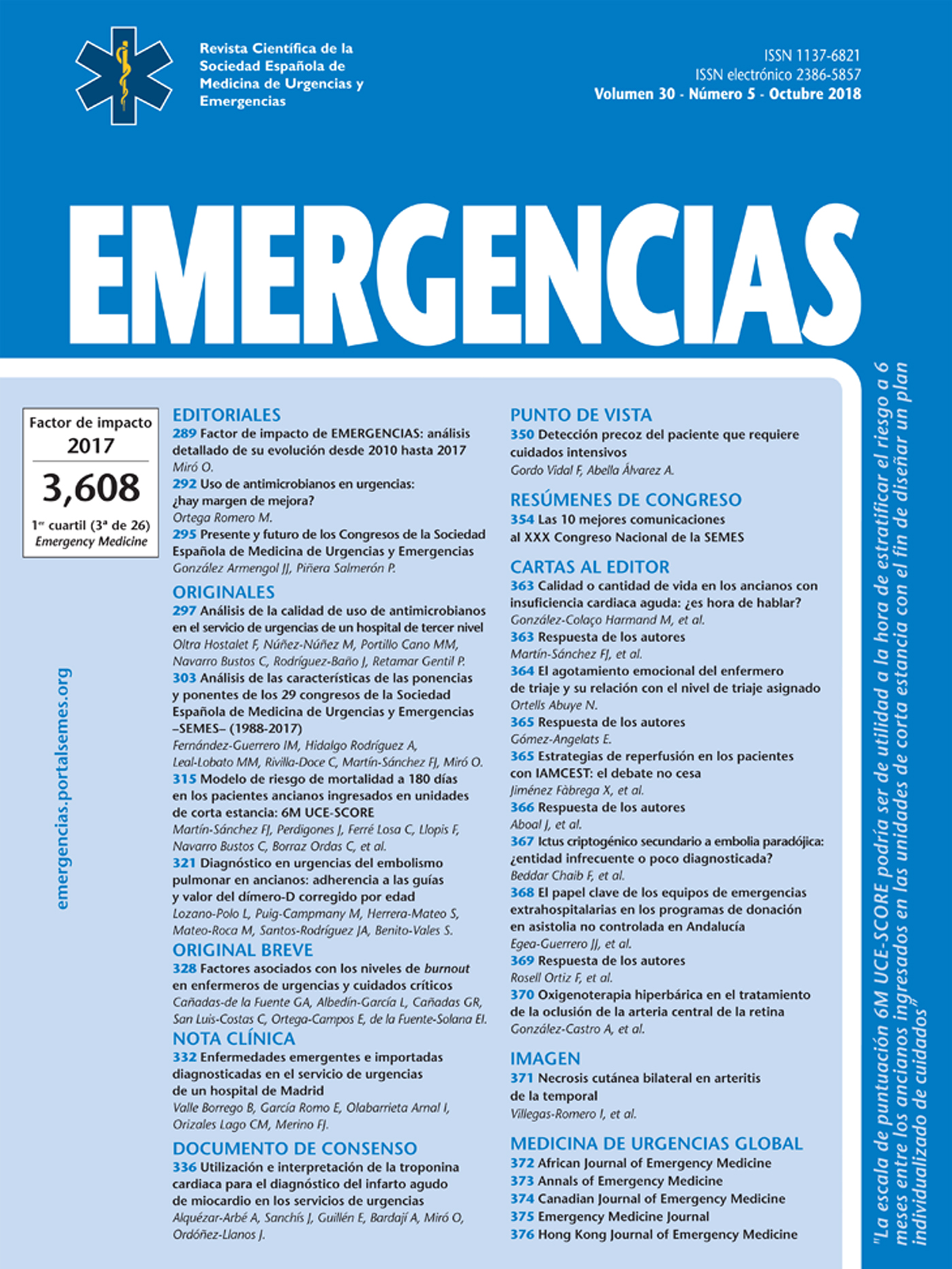
Official Journal of the Spanish Society of Emergency Medicine
Analysis of organ procurement from non–heart-beating donors over a 10-year period in Madrid
César Cardenete-Reyes, Ana María Cintora-Sanz, Alonso Mateos-Rodríguez, Carmen Cardós-Alonso, Ana María Pérez-Alonso
Cited: Cardenete-Reyes C, Cintora-Sanz AM, Mateos-Rodríguez A, Cardós-Alonso C, Pérez-Alonso AM. Analysis of organ procurement from non–heart-beating donors over a 10-year period in Madrid. Emergencias. 2019;31:252–256.
Background and Objective: The Autonomous Community of Madrid procures the largest number of organs from uncontrolled non–heart-beating donors (NHBD) after circulatory death in Spain. The aim of this study was to analyze the yield of these donations in terms of viable organs procured (category IIa) according to information extracted from the CORE registry of the Spanish National Transplant Organization (ONT) for the Madrid area.
Methods: Retrospective observational study of NHBD data registered between 2007 and 2017, including age, height, weight, body mass index (BMI), emergency care times, method of chest compressions applied (mechanical cardiopump vs manual compressions), and viable organs extracted.
Results: A total of 679 circulatory death donors were registered; 458 (67.6%) of them were utilized donors. The median BMI correlated negatively (–0.161) with the number of viable organs extracted (P < .001). The method of applying chest compressions significantly influenced liver viability: only those extracted after mechanical cardiopump compressions were viable for transplantation. Type of compressions did not effect kidney or lung viability.
Conclusion: Variables to bear in mind as predictors of success in NHBD donation are BMI and type of chest compressions applied.
Hong Kong Journal of Emergency Medicine
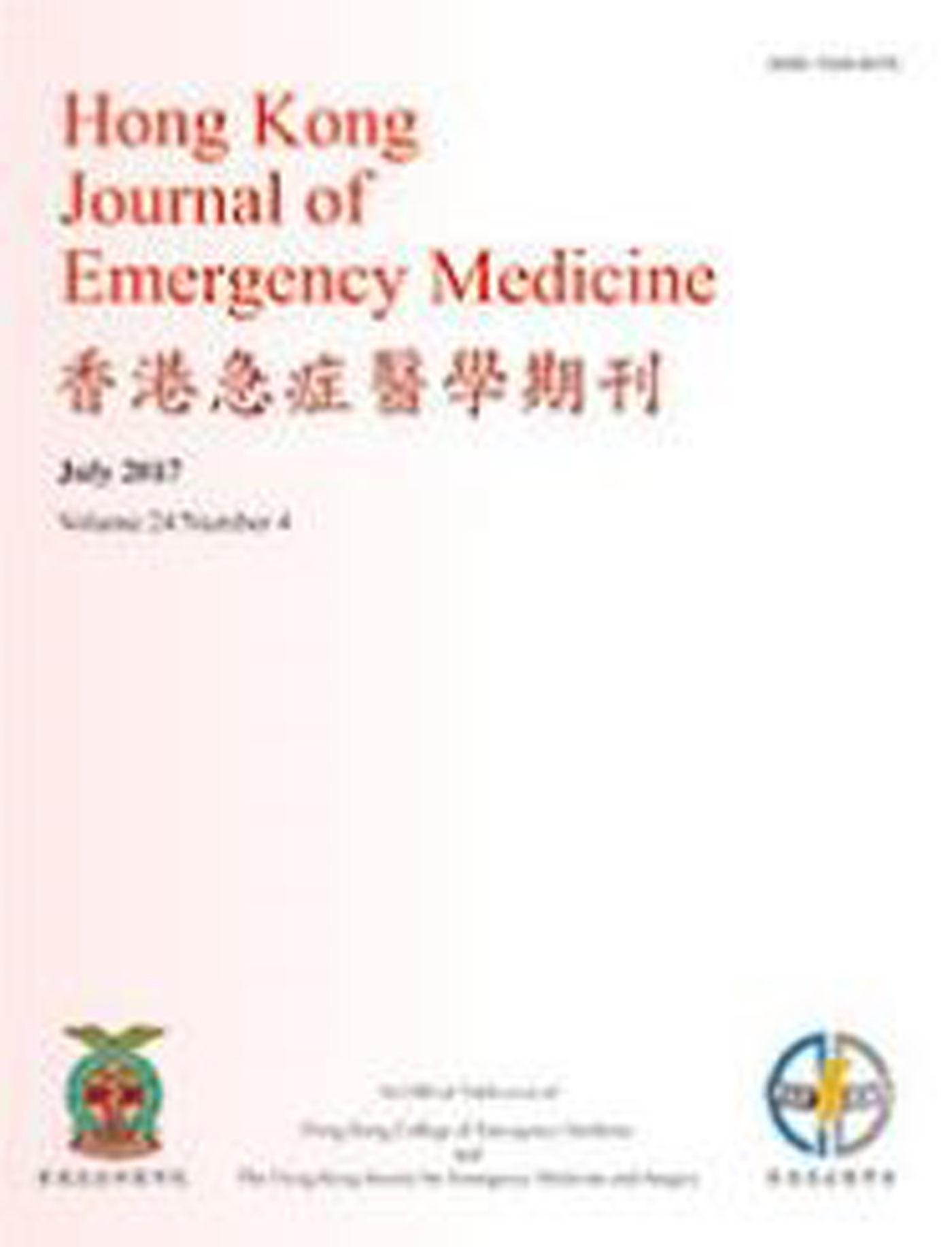
Official Journal of the Hong Kong College of Emergency Medicine
Feasibility of predictive model by clinical and laboratory parameters for risk stratification of geriatric abdominal pain
Chun Tat Lui, Wei Ming Ching, Kwok Leung Tsui, Ho Cheung Chu, Alex To Shing Tsui, Tak Shun Au, Tai Wai Wong, Kit Ling Fan and Ling Pong Leung
Background: Assessment of geriatric patients presented with abdominal pain had been challenge for emergency physicians with the ageing population. A rapid, reproducible risk stratification model for the assessment of the need for admission for geriatric abdominal pain would be required to identify low-risk patients to be managed as out-patient basis.
Objective: Assess the feasibility of risk stratification model to predict the need of hospital admission based on readily available bedside parameters in emergency departments.
Methods: This is a multicenter retrospective cohort study in four emergency departments. Patients aged at least 65 who presented with chief complaint of abdominal pain within the previous 7 days of attendance as the chief complaint were included. Chart review was performed for the included patients. The primary outcome was defined as a composite of mortality, abdominal surgery or endoscopic treatment, and other inpatient treatments for abdominal diseases within 14 days, surrogating the need of hospital admission. Logistic regression was modeled to identify independent predictors. The diagnostic accuracy of the risk model was evaluated with the receiver operating characteristic curve and compared with the clinical gestalt of decision for hospital admission by the attending physician.
Results: In total, 553 patients were included. Symptoms of upper gastrointestinal bleeding, non-ambulatory presenting status, pain duration, focal abdominal tenderness, hyperglycemia, leukocytosis, and elevated creatinine were independent predictors of the outcome. The area under the receiver operating characteristic curve of the predicted probabilities of the logistic model was 0.741. In keeping for a low-risk criterion to achieve more than 90% sensitivity, the predictive model would only achieve 18.2% specificity which was inferior to clinical gestalt for hospital admission (sensitivity 99.3%, specificity 44.3%).
Conclusion: Risk stratification model by clinical assessment and laboratory markers alone were inadequate and inferior to clinical gestalt for identification of the group of patients requiring inpatient treatment.


